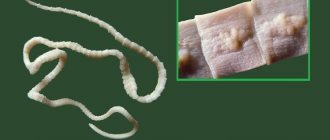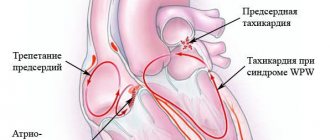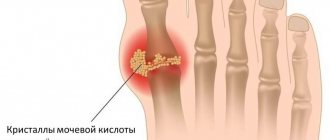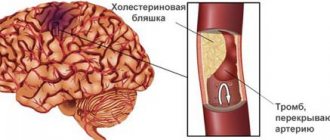Psychosis is a short-term, reversible mental disorder that occurs in a person as a result of mental trauma. They are characterized by the severity, severity and depth of the mental harm caused. Productive and negative symptoms arise. German psychologist and psychiatrist Karl Jaspers formulated the concept that reactive psychoses
occur due to a conflict between the individual and an unbearable reality. This definition was included in textbooks and, in many ways, became classic.
What are psychoses?
Psychoses are divided into many types and subtypes, depending on the causes and consequences.
- Affective (depressive, manic, manic-depressive);
- Schizoaffective
- Hallucinatory;
- Delusional;
- Hallucinatory-delusional;
- Alcoholic;
- Hysterical;
Affective psychosis is a disorder that is expressed by manic, depressive or mixed episodes. These conditions, as a rule, do not subsequently lead to disturbances in mental activity. Episodes may vary in time (duration) and degree of mental disorder. Manic psychosis
may last five to six months, the depressive phase is usually longer (four to nine months). The longest affective psychosis known to science to date lasted 18 years.
Affective psychoses
1. Monopolar depressive, in the clinic there is only a depressive phase.
2. Monopolar manic
3.Bipolar, in which depressive episodes predominate
4. Bipolar, in which manic episodes predominate;
5. Subtype with manic and depressive phases of equal duration and depth.
Schizoaffective psychosis is a mental disorder in which signs of schizophrenia
combined with signs
of an affective disorder
.
Such psychoses are characterized by abnormal thought processes and deregulated emotions. The diagnosis is usually made when a person has features of both schizophrenia and an affective disorder (mood disorder)—both bipolar disorder
and depression—but does not strictly meet the diagnostic criteria for either. The bipolar type is characterized by symptoms of mania, hypomania, or a mixed episode. Psychoses of the depressive type are characterized only by symptoms of depression. Common symptoms include paranoid delusions, auditory hallucinations, speech and thinking disorders. As a rule, psychoses begin to manifest themselves at a young age - between 15 and 20 years, but they are also characteristic of all other ages.
Psychoses of the schizoaffective type are considered both within the framework of schizophrenia and within the framework of affective psychosis with an atypical clinical picture.
Kandinsky syndrome
- the phenomenon of auditory hallucinations that accompany
delusions of persecution
, influence, relationship; the syndrome is also characterized by phenomena of mental automatism (a feeling of mastery that occurs when the patient is imaginary influenced by one or another type of energy). Kandinsky syndrome is characteristic of schizophrenia.
Functional psychoses of late age
- mental disorders that occur in old age and are associated with profound metabolic disorders. Such psychoses, in turn, are divided into paranoid and depressive.
Alcohol psychosis
People with the first and second stages of alcoholism, with a long history of use, suffer from alcoholic psychosis. Most often, a type of psychosis occurs such as delirium tremens, or in common parlance – “delirium tremens”.
Hysterical psychosis
. The cause of hysterical psychosis is most often mental delirium. It is this type that is promoted by the hysterical type of personality accentuation. The following types of hysterical psychosis are distinguished:
- hysterical syndrome of delusional fantasies (manifested by unstable, changeable ideas that do not form a specific system and have fantastic content);
- hysterical twilight stupefaction (anxiety, fleeting words, elements of pseudodementia
, demonstrativeness, hysterical excitement is accompanied by clowning, laughter, but can abruptly give way to crying, visual hallucinations are also possible); - hysterical stupor
(against the background of psychomotor retardation, a number of hysterical symptoms characteristic of pseudodementia are revealed); - pseudodementia
(psychopathological condition with transient regression of mental activity, simulating dementia); - puerilism
(appearance of childish traits in speech and behavior), the extreme degree of puerilism - “feralization syndrome” (patients behave like animals, sometimes the patient’s behavior externally resembles a specific animal).
Personality characteristics
It has been established that pathology more often develops in women with poor emotional reactions and who are not accustomed to the vivid expression of both positive and negative emotions. Upbringing and relationships with parents play an important role in this. Psychosis is often diagnosed in single women who, due to their complex nature, cannot form a family or maintain long-term relationships with the opposite sex.
Glossary of terms
In this section we have collected all the terms that you might encounter in this article. Gradually, we will collect from these explanations a real dictionary of a narcologist-psychiatrist. If some concepts remain unclear to you, leave your comments under the articles on our site. We will definitely help you figure it out.
Personality accentuation
- a personality trait in which some character traits are strengthened, while others are, on the contrary, dull. Such patients exhibit selective vulnerability to the manifestations of some psychogenic influences and amazing resistance to the manifestations of others.
Alcohol delirium
– alcoholic psychosis associated with alcohol abuse.
Occurs in the second or third stage of alcoholism, when withdrawing from alcohol (cessation of consumption). Alcoholic delirium is accompanied by hallucinations (auditory, tactile and visual), as well as chills and fever. In most cases, hallucinations seem threatening to the patient; many note that they saw devils, insects and other dangerous creatures. The greatest danger is the risk of -harm
(damage to oneself), sometimes leading to death. As a rule, delirium tremens develops between the second and fifth days after an abrupt cessation of binge drinking.
Affective disorder
– a mental disorder that is associated with disturbances of affect (the balance between internal mood and its external manifestations). In other words, an affective disorder is a disorder that is based on a disturbance in the emotional state.
Delirium (delusional syndrome)
– a mental disorder that is characterized by erroneous, completely uncontrollable judgments in the patient. These judgments are capable of being formed without any explanation, reason or appropriate conditions for this. This syndrome manifests itself in patients with schizophrenia, as well as in people suffering from diseases of the central nervous system of a vascular and atrophic nature. In addition, patients diagnosed with psychosis are also susceptible to the development of delusional syndrome.
Hallucination
- an image that appears in the patient’s mind without external conditions. As a rule, hallucinations appear with the use of psychoactive substances (alcohol, drugs, many psychotropic medications), significant fatigue, as well as with mental disorders and neuralgia. Regular and prolonged hallucinations are a common occurrence in schizophrenia and are significant complications of its clinical picture.
Depressed state (depression)
– a long-term mental disorder, accompanied by deterioration in mood, loss of the ability to rejoice, disruptions in thinking, and obvious motor retardation.
Hysterical psychosis
– a type of psychosis associated with hysterical personality disorder, which is characterized by superficial thinking, the need for the attention of others, pretentious behavior, as well as suggestibility and self-hypnosis.
Pseudo-dementia
is a dementia-like condition, distinguished by the fact that it is caused by depression and is reversible. A person in a state of pseudodementia appears confused, has sleep disturbances, memory loss and other cognitive problems, and begins to talk. However, research shows that in reality everything is fine with memory, speech, and coordination of movements.
Puerilism
– a form of reactive psychosis, a defensive reaction of the psyche to significant nervous shock or mental trauma.
Selfharm (self-harm)
– deliberate damage to one’s body for internal reasons, without the intention of dying. Selfharm is considered a symptom of many mental disorders. Typically, self-harm involves cutting the skin, scratching oneself, burning the skin, pinching limbs, picking wounds, pulling out hair, and so on.
Twilight stupefaction (twilight deviation)
- a deviation of consciousness that appears suddenly and is characterized by a serious inability to navigate in the surrounding space. At the same time, the patient retains the ability to perform his usual automated actions. As a rule, twilight deviation arises and ends suddenly and does not last long (such mental disorders are called “fleeting” or “transient”.
Main symptoms
The disease manifests itself with various symptoms that need to be addressed promptly:
- hallucinations: a person talks with invisible interlocutors, listens to something, abruptly ends the conversation. Visual and olfactory hallucinations may also occur, because it all depends on the characteristics of the problem;
- nonsense: a person turns off critical thinking, so it is useless to explain or prove anything to him. He will be jealous, cause harm, talk to imaginary interlocutors;
- emotional disorders: the ability to express emotions suffers, because the person will not understand what exactly he is doing;
- changes in character: a person becomes nervous, overly emotional, refuses to eat and does not sleep;
- changes in sensations: mood constantly changes, unreasonable fears appear;
- changes in behavior and performance: a person becomes distrustful, refuses to make contact, is inattentive, and prone to stressful situations;
- changes in perception: the perception of sounds and shades is distorted.
If you notice symptoms of psychosis in yourself or your loved ones, contact a professional immediately. They will provide first aid and engage in further treatment of the patient using the best programs and methods.
Reasons for the development of schizophrenia
Until now, it has not been possible to establish the main cause of the development of schizophrenia, despite the high level of development of medicine. Most psychiatrists agree that genetic predisposition is one of the main reasons. For example, if someone in the family had schizophrenia, then all blood relatives increase the risk of developing this mental pathology. But the type of inheritance remains unknown.
Also influence:
- Low social status. — Poor living conditions. - Poverty. - Dysfunctional family. - Drug addiction. - Alcohol addiction. — Traumatic brain injuries. — Prolonged psychotraumatic situations.
In some cases, schizophrenia can develop after prolonged stressful situations, but in the vast majority of patients the disorder occurs spontaneously.
Active treatment
Carried out using:
- tranquilizers and antipsychotics with individual determination of the daily dose (some patients refuse therapy due to severe side effects of such drugs: drowsiness, decreased performance, deterioration of cognitive functions, etc.);
- antidepressants intended for intravenous administration (used in a hospital setting).
Indications for hospitalization are obsessive thoughts of suicide, delusions, hallucinosis, severe disturbances of consciousness (typical of schizoaffective disorder), and pregnancy.
Schizophrenia-like acute psychotic disorder
Schizophrenomorphic acute disorder is accompanied by Kandinsky-Clerambault syndrome, delusions and hallucinations. Usually the patient experiences confusion or is in a state of passion. In the first case, a person does not understand who he is, where he is and at what time. The second option is accompanied by anger, severe fear, anxiety, and some experience a state of ecstasy and euphoria.
Acute schizophrenia-like psychotic disorder develops very quickly. In some cases, a person exhibits disorganization of speech; it is fragmented and devoid of meaning. Sometimes he experiences catatonia - freezing for a long time in one position, or motor agitation.
With this deviation, typical symptoms characteristic of schizophrenia are noted. But the main difference between this disorder and other acute psychoses is that affective and psychotic symptoms do not change, but are stable. Thus, during a schizophrenia-like attack there are a number of manifestations that make it possible to determine this deviation:
- rapid onset and development of the clinical picture of the disease;
- symptoms typical for schizophrenia;
- stability of affective and psychotic disorders.
Medical is your reliable assistant in a difficult situation
Medical provides treatment for psychosis in St. Petersburg. We have everything necessary to provide prompt assistance to patients:
- a hospital where optimal conditions are created for high-quality and effective treatment;
- more than 40 qualified psychiatrists on staff, the ability to engage leading country experts for consultation if necessary;
- modern diagnostic techniques that allow you to obtain the most reliable information in the shortest possible time;
- comprehensive consulting: our multidisciplinary clinics employ doctors of different specializations, which allows us to treat not only mental, but also somatic diseases;
- license to prescribe psychotropic drugs. This document gives us the right to use the entire range of medications in treatment. In our city, only a few clinics have received such a license;
- wide geography. Our centers are located in three districts of St. Petersburg, and a clinic recently opened in Vsevolozhsk.
Together we will overcome any difficulties that treatment of psychosis brings!











